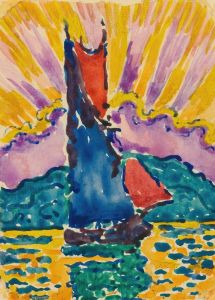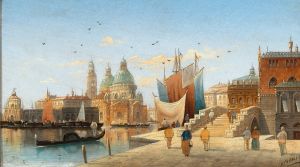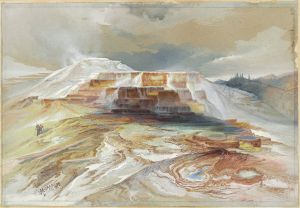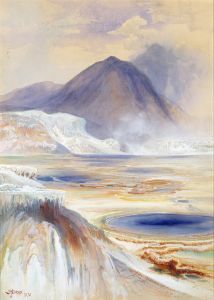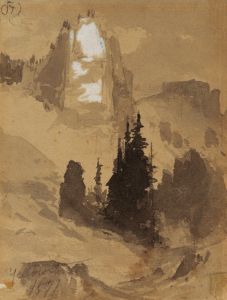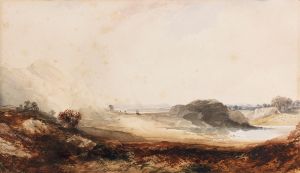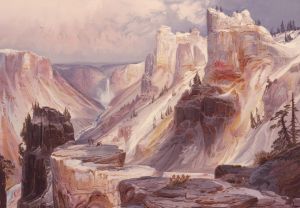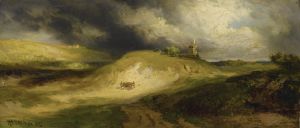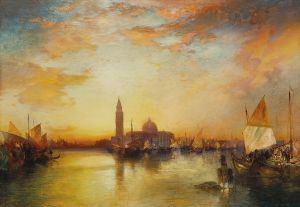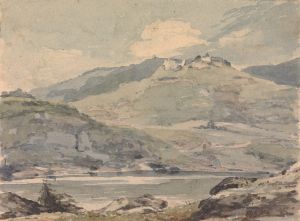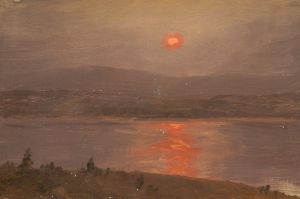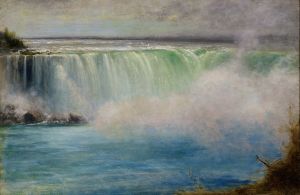
Montauk
A hand-painted replica of Thomas Moran’s masterpiece Montauk, meticulously crafted by professional artists to capture the true essence of the original. Each piece is created with museum-quality canvas and rare mineral pigments, carefully painted by experienced artists with delicate brushstrokes and rich, layered colors to perfectly recreate the texture of the original artwork. Unlike machine-printed reproductions, this hand-painted version brings the painting to life, infused with the artist’s emotions and skill in every stroke. Whether for personal collection or home decoration, it instantly elevates the artistic atmosphere of any space.
Thomas Moran was a prominent American painter known for his contributions to the Hudson River School and his depictions of the American West. However, there is no widely recognized painting titled "Montauk" by Thomas Moran. Moran is best known for his works that capture the grandeur of the American landscape, particularly the Yellowstone region, which played a significant role in the establishment of the National Park System.
Moran was born in 1837 in Bolton, England, and emigrated with his family to the United States in 1844. He began his artistic career as an apprentice to a wood-engraver in Philadelphia, but soon turned to painting. Moran's early works were influenced by the Hudson River School, a mid-19th century American art movement embodied by a group of landscape painters whose aesthetic vision was influenced by romanticism.
Moran's career took a pivotal turn in 1871 when he joined the Hayden Geological Survey of 1871, which explored the Yellowstone region. His sketches and paintings from this expedition were instrumental in convincing Congress to establish Yellowstone as the first national park in 1872. His most famous painting from this period, "The Grand Canyon of the Yellowstone," is celebrated for its vivid colors and dramatic composition, capturing the awe-inspiring beauty of the landscape.
Throughout his career, Moran traveled extensively, painting landscapes across the United States and Europe. His works are characterized by their luminous color palette and meticulous attention to detail, often depicting dramatic natural scenes with a sense of grandeur and majesty. Moran's paintings played a crucial role in shaping the perception of the American wilderness and contributed to the burgeoning conservation movement of the late 19th century.
While there is no specific record of a painting titled "Montauk" by Moran, it is possible that he may have visited or painted scenes from Montauk, a region located at the eastern tip of Long Island, New York. Montauk is known for its picturesque landscapes, including beaches, cliffs, and the iconic Montauk Point Lighthouse. However, without concrete evidence or documentation, any connection between Moran and a painting titled "Montauk" remains speculative.
Thomas Moran's legacy as an artist is firmly established through his breathtaking depictions of the American landscape, particularly the Western United States. His works continue to be celebrated for their artistic merit and historical significance, capturing the spirit of exploration and the natural beauty of the American wilderness. Moran passed away in 1926, leaving behind a rich legacy of paintings that continue to inspire and captivate audiences worldwide.
In summary, while Thomas Moran is a significant figure in American art history, there is no verified information regarding a painting specifically titled "Montauk" by him. His contributions to landscape painting and the preservation of natural beauty remain his enduring legacy.





